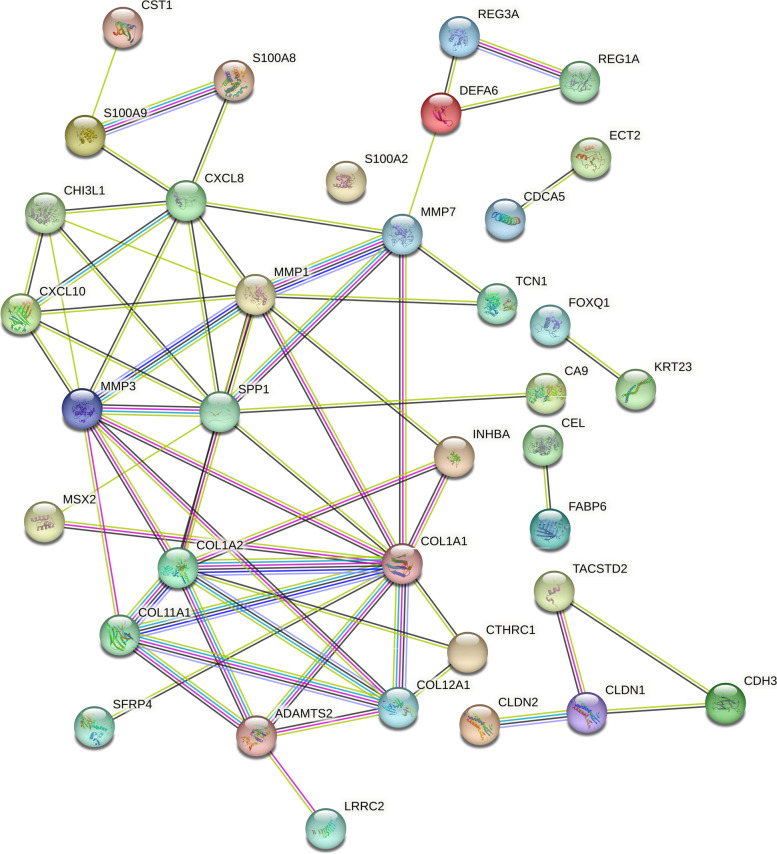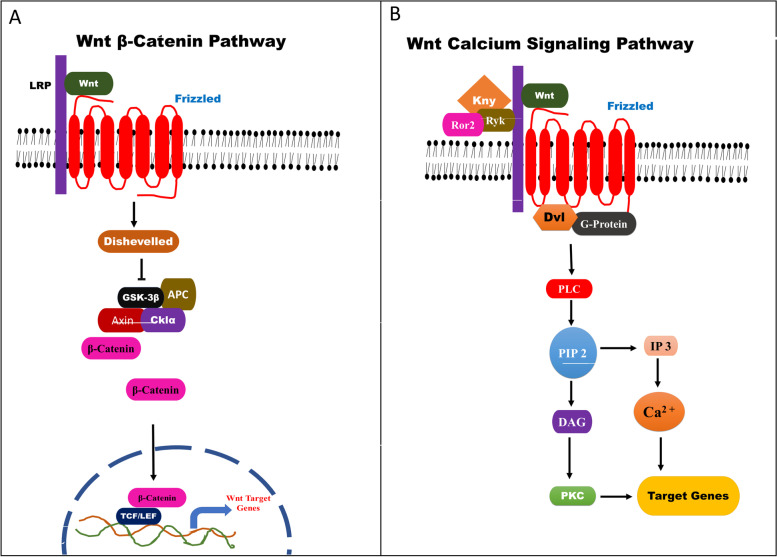In silico analysis reveals mir-98-5p as a potential inhibitor of tumor cell proliferation and metastasis in colorectal cancer by targeting the fzd3 receptor of the Wnt signaling pathway
IF 3.5
Q3 Biochemistry, Genetics and Molecular Biology
Journal of Genetic Engineering and Biotechnology
Pub Date : 2023-12-01
DOI:10.1186/s43141-023-00532-7
引用次数: 0
Abstract
Background
Colorectal Cancer (CRC) is the third most common cancer type and the second leading cause of cancer-related deaths worldwide. However, the existing treatment, as well as prognosis strategies for CRC patients, need to be improved in order to increase the chance of survival. Targeted therapies of CRC, as opposed to ordinary therapies, target key biological features and pathways of cancerous cells hence minimizing the subsequent damage to normal cells. MicroRNAs have been reported to play a crucial role in inhibiting and/or suppressing major pathways in various cancer types by targeting transcripts of key genes in such pathways.
Methods
The purpose of this study was to analyze in silico the differentially expressed genes from five microarray datasets of patients with CRC. Furthermore, miRNAs were investigated to inhibit cancer cell proliferation and metastasis by targeting a key gene—frizzled receptor 3 (FZD3) in the Wnt signaling pathway.
Results
The Wnt pathway receptor FZD3 is upregulated in CRC along with other pathway genes, which play a critical role in tumorigenesis. In contrast, miR-98-5p inhibits the activity of FZD3 by binding directly to the 3′UTR of its mRNA, therefore exerting a suppressor effect on colorectal tumors.
Conclusion
The study reveals miR-98-5p as a novel target of FZD3 and an inhibitor of the Wnt signaling pathway hence being a potential candidate for developing targeted therapies against CRC.



计算机分析显示,mir-98-5p通过靶向Wnt信号通路的fzd3受体,可能成为结直肠癌肿瘤细胞增殖和转移的潜在抑制剂。
背景:结直肠癌(CRC)是全球第三大最常见的癌症类型,也是癌症相关死亡的第二大原因。然而,为了提高CRC患者的生存机会,现有的治疗方法和预后策略需要改进。与普通疗法相反,CRC的靶向治疗针对癌细胞的关键生物学特征和途径,从而最大限度地减少对正常细胞的后续损伤。据报道,microrna通过靶向各种癌症类型中关键基因的转录本,在抑制和/或抑制这些途径中发挥着至关重要的作用。方法:本研究的目的是通过计算机分析来自5个CRC患者微阵列数据集的差异表达基因。此外,研究人员还研究了mirna通过靶向Wnt信号通路中的关键基因卷曲受体3 (FZD3)来抑制癌细胞增殖和转移。结果:Wnt通路受体FZD3与其他通路基因在结直肠癌中表达上调,在肿瘤发生中起关键作用。相反,miR-98-5p通过直接结合FZD3 mRNA的3'UTR抑制FZD3的活性,从而对结直肠肿瘤产生抑制作用。结论:该研究表明miR-98-5p是FZD3的新靶点和Wnt信号通路的抑制剂,因此是开发针对CRC的靶向治疗的潜在候选者。
本文章由计算机程序翻译,如有差异,请以英文原文为准。
求助全文
约1分钟内获得全文
求助全文
来源期刊

Journal of Genetic Engineering and Biotechnology
Biochemistry, Genetics and Molecular Biology-Biotechnology
CiteScore
5.70
自引率
5.70%
发文量
159
审稿时长
16 weeks
期刊介绍:
Journal of genetic engineering and biotechnology is devoted to rapid publication of full-length research papers that leads to significant contribution in advancing knowledge in genetic engineering and biotechnology and provide novel perspectives in this research area. JGEB includes all major themes related to genetic engineering and recombinant DNA. The area of interest of JGEB includes but not restricted to: •Plant genetics •Animal genetics •Bacterial enzymes •Agricultural Biotechnology, •Biochemistry, •Biophysics, •Bioinformatics, •Environmental Biotechnology, •Industrial Biotechnology, •Microbial biotechnology, •Medical Biotechnology, •Bioenergy, Biosafety, •Biosecurity, •Bioethics, •GMOS, •Genomic, •Proteomic JGEB accepts
 求助内容:
求助内容: 应助结果提醒方式:
应助结果提醒方式:


